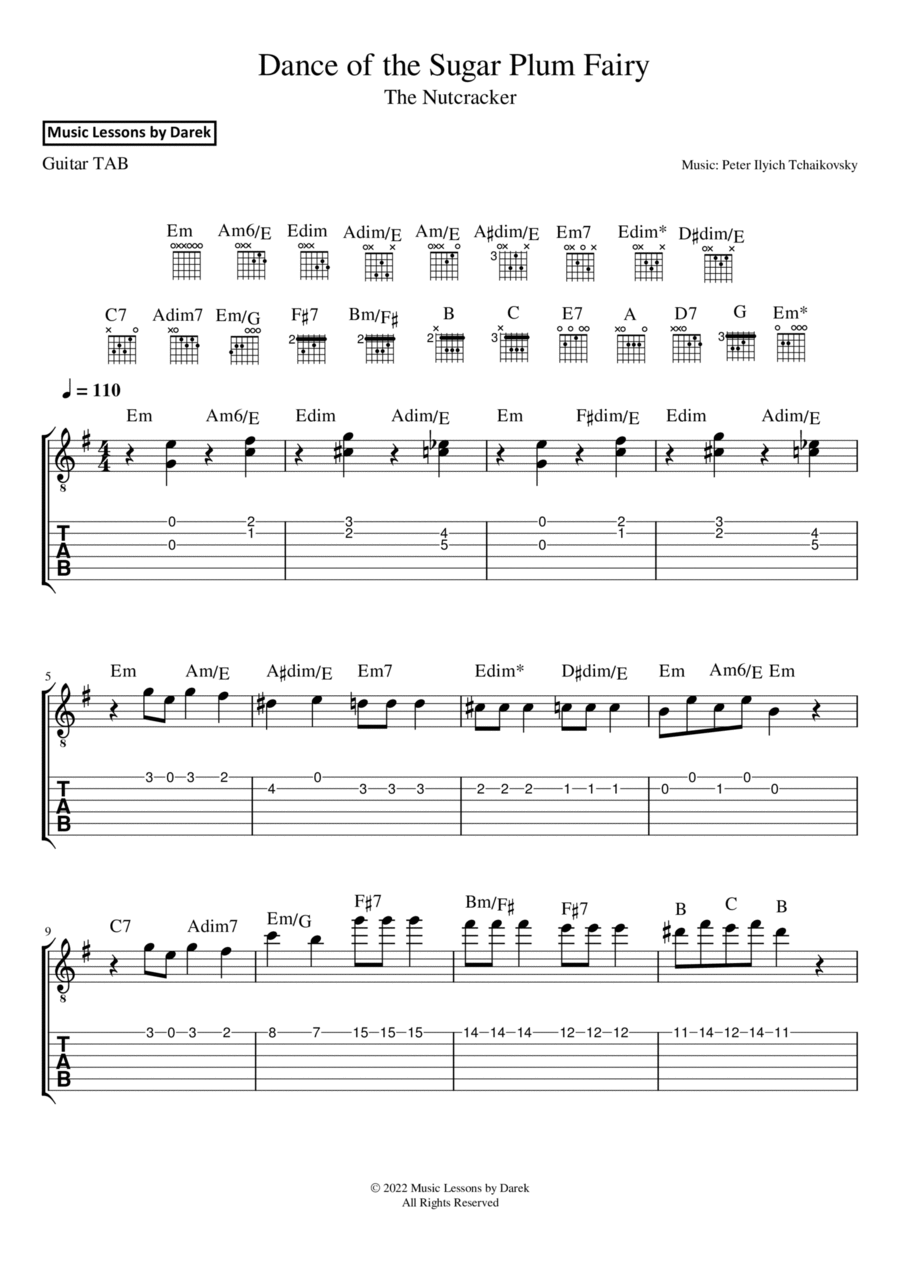Easy Guitar (with TAB) - Level 2 - Digital Download SKU: A0.1276855 By Peter Ilyich Tchaikovsky. By Peter Ilyich Tchaikovsky. Arranged by Darek. 19th Century,Classical,Romantic Period. Tablature. 2 pages. Darek #868546. Published by Darek (A0.1276855). Dance of the Sugar Plum Fairy (GUITAR TAB) The Nutcracker [Peter Ilyich Tchaikovsky]Guitar arrangement of Dance of the Sugar Plum Fairy, The Nutcracker by Peter Ilyich Tchaikovsky. Simplified arrangement for guitarists | Easy arrangement for beginners | Simplified version for guitarists | Simplified guitar TABS | Classical Music | Romantic Period | Intermediate arrangement | Guitar. Included: Sheet Music, Tabulature, Chords and simple YouTube tutorial. Embark on a delightful musical journey with our beginner-level guitar tablature arrangement of Peter Ilyich Tchaikovsky's enchanting piece, Dance of the Sugar Plum Fairy from The Nutcracker. Designed for aspiring guitarists, this sheet music offers a perfect introduction to the world of classical melodies on the guitar. Discover the magic of Tchaikovsky's masterpiece through our meticulously crafted guitar tablature, complete with sheet music, tabulature, chords, and an instructive YouTube tutorial. This comprehensive package ensures that you not only learn to play the piece, but also infuse it with your own musical expression. Transport yourself to the captivating beauty of the Romantic era as you strum the timeless notes that have resonated through history. Whether you're a novice or seeking a charming addition to your repertoire, this arrangement provides a gateway to Tchaikovsky's genius. As you pluck the strings, you'll forge a connection to the rich heritage of music that continues to inspire generations. Elevate your musical journey with this meticulously crafted arrangement, designed to make learning enjoyable and rewarding. Keywords: Dance of the Sugar Plum Fairy, The Nutcracker, Peter Ilyich Tchaikovsky, beginner-level arrangement, aspiring guitarists, guitar tablature, sheet music, tabulature, chords, YouTube tutorial, Romantic era, musical expression, repertoire, musical heritage, plucking strings, musical journey, classical music, beginner level, enchanting, timeless, melodies, musical journey, guitar, performance, arrangement, musical history, expression, learning.
